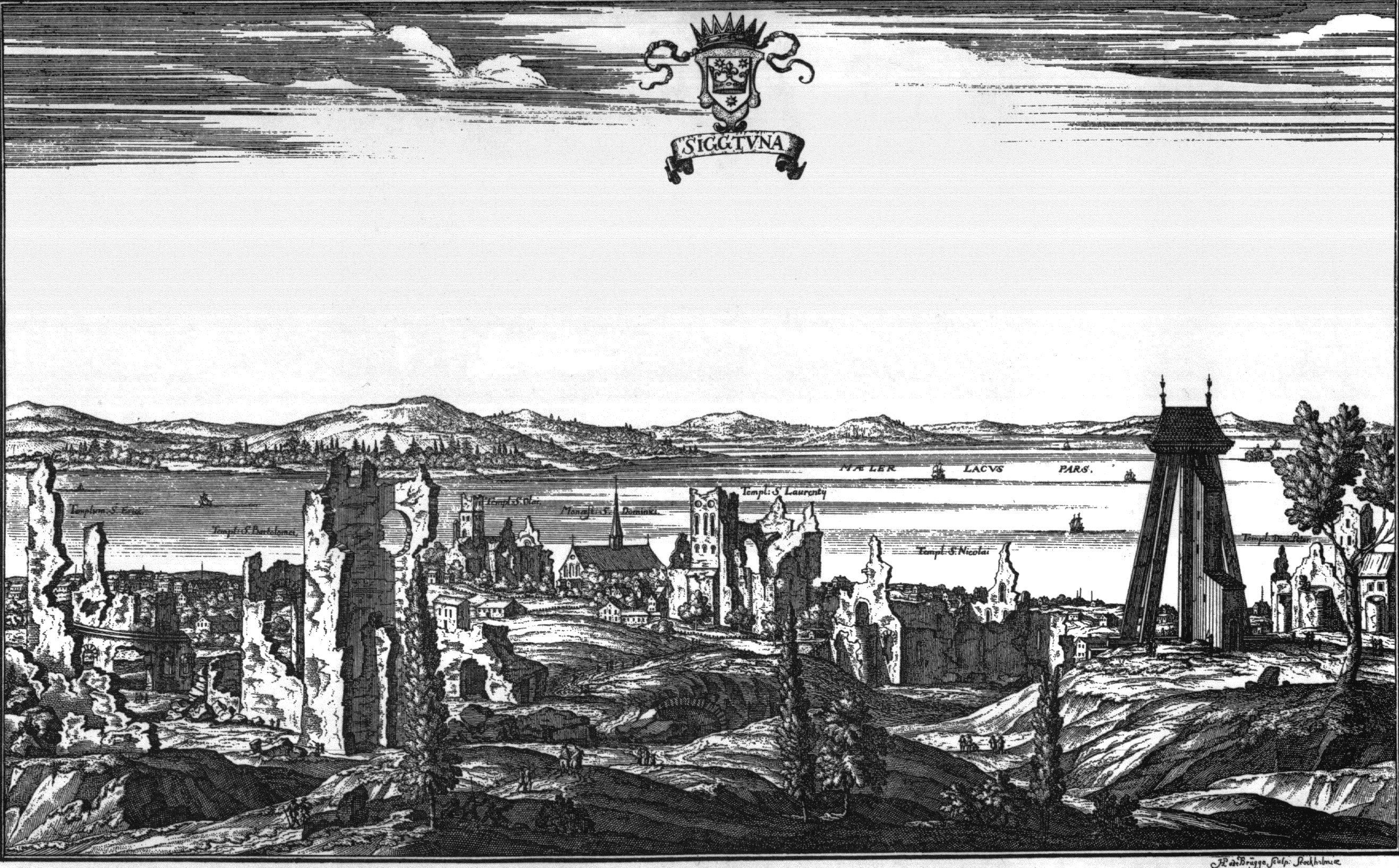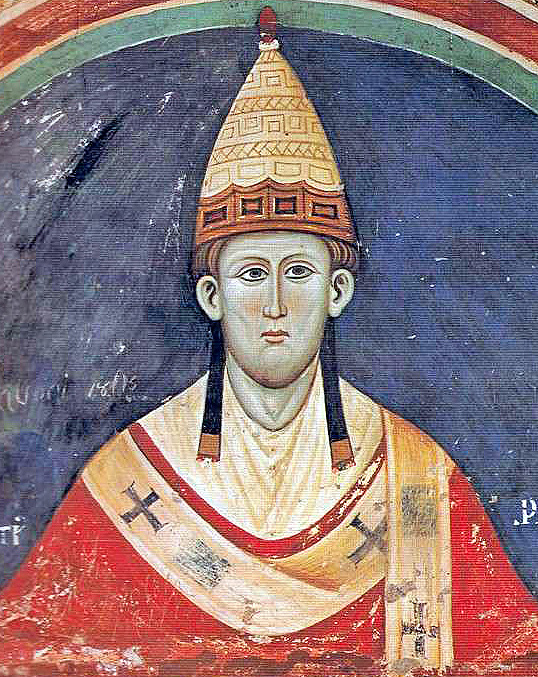|
Johan (archbishop Of Uppsala, Died 1291)
Johan was a Swedish priest and Dominican friar. He served as the Bishop of Turku from 1286 to 1290 and Archbishop of Uppsala from 1290 to 1291. According to some sources, Johan was born in Poland, according to others in Uppsala. Before his assignment to Turku, he worked as the prior at the Dominican monastery in Sigtuna (''Sigtuna dominikankonvent''). He died in Avignon while travelling to Rome to receive the pallium The pallium (derived from the Roman ''pallium'' or ''palla'', a woolen cloak; : ''pallia'') is an ecclesiastical vestment in the Catholic Church, originally peculiar to the pope, but for many centuries bestowed by the Holy See upon metropoli .... References Other sources *Tesch, Sten (1997) ''Mariakyrkan i Sigtuna dominikankonvent och församlingskyrka 1247-1997'' *Åsbrink, Gustav & Westman, Knut B. (1935)''Svea rikes ärkebiskopar från 1164 till nuvarande tid'' (Stockholm: Bokförlaget Natur och Kultur) *Paulsson, Göte (1974) ''Annales Suecici ... [...More Info...] [...Related Items...] OR: [Wikipedia] [Google] [Baidu] |
Bishop Of Turku
The Archdiocese of Turku ( fi, Turun arkkihiippakunta, sv, Åbo ärkestift), historically known as '' Archdiocese of Åbo'', is the seat of the Archbishop of Turku. It is a part of the Evangelical Lutheran Church of Finland, and its see city is Turku. The Archbishop has many administrative tasks relating to the National church, and is the Metropolitan and Primate of the church. In common with other Lutheran and Anglican churches the Archbishop is considered ''primus inter pares'' while all diocesan bishops retain their independence within their respective jurisdictions. This also applies to the Bishop of Turku Archdiocese. The Archdiocese of Turku has a unique episcopal structure as there are two bishops in the Diocese. History Influenced by papal bulls, Swedish magnates in the 12th century set up crusading expeditions to convert the heathens in the eastern Baltic. This resulted in the establishment of the Catholic Church, the Christian religion and the Swedish conquest of ... [...More Info...] [...Related Items...] OR: [Wikipedia] [Google] [Baidu] |
Archbishop Of Uppsala
The Archbishop of Uppsala (spelled Upsala until the early 20th century) has been the primate of Sweden in an unbroken succession since 1164, first during the Catholic era, and from the 1530s and onward under the Lutheran church. Historical overview There have been bishops in Uppsala from the time of Swedish King Ingold the Elder in the 11th century. They were governed by the archbishop of Hamburg-Bremen until Uppsala was made an archbishopric in 1164. The archbishop in Lund (which at that time belonged to Denmark) was declared primate of Sweden, meaning it was his right to select and ordain the Uppsala archbishop by handing him the pallium. To gain independence, Folke Johansson Ängel in 1274 went to Rome and was ordained directly by the pope. This practice was increasing, so that no Uppsala archbishop was in Lund after Olov Björnsson, in 1318. In 1457, the archbishop Jöns Bengtsson (Oxenstierna) was allowed by the pope to declare himself primate of Sweden. Uppsala (then ... [...More Info...] [...Related Items...] OR: [Wikipedia] [Google] [Baidu] |
Prior (ecclesiastical)
Prior (or prioress) is an ecclesiastical title for a superior in some religious orders. The word is derived from the Latin for "earlier" or "first". Its earlier generic usage referred to any monastic superior. In abbeys, a prior would be lower in rank than the abbey's abbot or abbess. Monastic superiors In the Rule of Saint Benedict, the term appears several times, referring to any superior, whether an abbot, provost, dean, etc. In other old monastic rules the term is used in the same generic sense. With the Cluniac Reforms, the term ''prior'' received a specific meaning; it supplanted the provost or dean (''praepositus''), spoken of in the Rule of St. Benedict. The example of the Cluniac congregations was gradually followed by all Benedictine monasteries, as well as by the Camaldolese, Vallombrosians, Cistercians, Hirsau congregations, and other offshoots of the Benedictine Order. Monastic congregations of hermit origin generally do not use the title of abbot for the hea ... [...More Info...] [...Related Items...] OR: [Wikipedia] [Google] [Baidu] |
Sigtuna
Sigtuna () is a locality situated in Sigtuna Municipality, Stockholm County, Sweden with 8,444 inhabitants in 2010. It is the namesake of the municipality even though the seat is in Märsta. Sigtuna is for historical reasons often still referred to as a ''stad''. Modern-day Sigtuna, a harbor town that was established around 980, developed approximately 4 kilometres east of Old Sigtuna (which, according to Norse mythology, was previously the home of Odin). Sigtuna has a medieval-style town centre with restaurants, cafes and small shops. The old church ruins, runic stones and the old main street (''Stora gatan'') are popular attractions for tourists, especially in the summertime. The small streets with low-built wooden houses lead up to several handicrafts shops and the old tiny town hall (''Sigtuna Rådhus''). There are restaurants and ''Sigtuna Stadshotell'', a hotel in the town centre. Geography Sigtuna is situated at the bay Skarven, stretching around Upplands-Bro a ... [...More Info...] [...Related Items...] OR: [Wikipedia] [Google] [Baidu] |
Avignon
Avignon (, ; ; oc, Avinhon, label=Provençal or , ; la, Avenio) is the prefecture of the Vaucluse department in the Provence-Alpes-Côte d'Azur region of Southeastern France. Located on the left bank of the river Rhône, the commune had a population of 93,671 as of the census results of 2017, with about 16,000 (estimate from Avignon's municipal services) living in the ancient town centre enclosed by its medieval walls. It is France's 35th largest metropolitan area according to INSEE with 336,135 inhabitants (2019), and France's 13th largest urban unit with 458,828 inhabitants (2019). Its urban area was the fastest-growing in France from 1999 until 2010 with an increase of 76% of its population and an area increase of 136%. The Communauté d'agglomération du Grand Avignon, a cooperation structure of 16 communes, had 192,785 inhabitants in 2018. Between 1309 and 1377, during the Avignon Papacy, seven successive popes resided in Avignon and in 1348 Pope Clement VI b ... [...More Info...] [...Related Items...] OR: [Wikipedia] [Google] [Baidu] |
Rome
, established_title = Founded , established_date = 753 BC , founder = King Romulus ( legendary) , image_map = Map of comune of Rome (metropolitan city of Capital Rome, region Lazio, Italy).svg , map_caption = The territory of the ''comune'' (''Roma Capitale'', in red) inside the Metropolitan City of Rome (''Città Metropolitana di Roma'', in yellow). The white spot in the centre is Vatican City. , pushpin_map = Italy#Europe , pushpin_map_caption = Location within Italy##Location within Europe , pushpin_relief = yes , coordinates = , coor_pinpoint = , subdivision_type = Country , subdivision_name = Italy , subdivision_type2 = Regions of Italy, Region , subdivision_name2 = Lazio , subdivision_type3 = Metropolitan cities of Italy, Metropolitan city , subdivision_name3 = Metropolitan City of Rome Capital, Rome Capital , government_footnotes= , government_type = Mayor–council gover ... [...More Info...] [...Related Items...] OR: [Wikipedia] [Google] [Baidu] |
Pallium
The pallium (derived from the Roman ''pallium'' or ''palla'', a woolen cloak; : ''pallia'') is an ecclesiastical vestment in the Catholic Church, originally peculiar to the pope, but for many centuries bestowed by the Holy See upon metropolitans and primates as a symbol of their conferred jurisdictional authorities, and still remains a papal emblem. In its present (western) form, the pallium is a long and "three fingers broad" (narrow) white band adornment, woven from the wool of lambs raised by Trappist monks. It is donned by looping its middle around one's neck, resting upon the chasuble and two dependent lappets over one's shoulders with tail-ends (doubled) on the left with the front end crossing over the rear. When observed from the front or rear the pallium sports a stylistic letter 'y' (contrasting against an unpatterned chasuble). It is decorated with six black crosses, one near each end and four spaced out around the neck loop. At times the pallium is embellished ... [...More Info...] [...Related Items...] OR: [Wikipedia] [Google] [Baidu] |
13th-century Roman Catholic Bishops In Sweden
The 13th century was the century which lasted from January 1, 1201 ( MCCI) through December 31, 1300 ( MCCC) in accordance with the Julian calendar. The Mongol Empire was founded by Genghis Khan, which stretched from Eastern Asia to Eastern Europe. The conquests of Hulagu Khan and other Mongol invasions changed the course of the Muslim world, most notably the Siege of Baghdad (1258), the destruction of the House of Wisdom and the weakening of the Mamluks and Rums which, according to historians, caused the decline of the Islamic Golden Age. Other Muslim powers such as the Mali Empire and Delhi Sultanate conquered large parts of West Africa and the Indian subcontinent, while Buddhism witnessed a decline through the conquest led by Bakhtiyar Khilji. The Southern Song dynasty would begin the century as a prosperous kingdom but would eventually be invaded and annexed into the Yuan dynasty of the Mongols. The Kamakura Shogunate of Japan would be invaded by the Mongols. Go ... [...More Info...] [...Related Items...] OR: [Wikipedia] [Google] [Baidu] |
Roman Catholic Archbishops Of Uppsala
Roman or Romans most often refers to: * Rome, the capital city of Italy * Ancient Rome, Roman civilization from 8th century BC to 5th century AD *Roman people, the people of ancient Rome *''Epistle to the Romans'', shortened to ''Romans'', a letter in the New Testament of the Christian Bible Roman or Romans may also refer to: Arts and entertainment Music *Romans (band), a Japanese pop group * ''Roman'' (album), by Sound Horizon, 2006 * ''Roman'' (EP), by Teen Top, 2011 *"Roman (My Dear Boy)", a 2004 single by Morning Musume Film and television *Film Roman, an American animation studio * ''Roman'' (film), a 2006 American suspense-horror film * ''Romans'' (2013 film), an Indian Malayalam comedy film * ''Romans'' (2017 film), a British drama film * ''The Romans'' (''Doctor Who''), a serial in British TV series People * Roman (given name), a given name, including a list of people and fictional characters * Roman (surname), including a list of people named Roman or Romans *Ῥωμ� ... [...More Info...] [...Related Items...] OR: [Wikipedia] [Google] [Baidu] |



